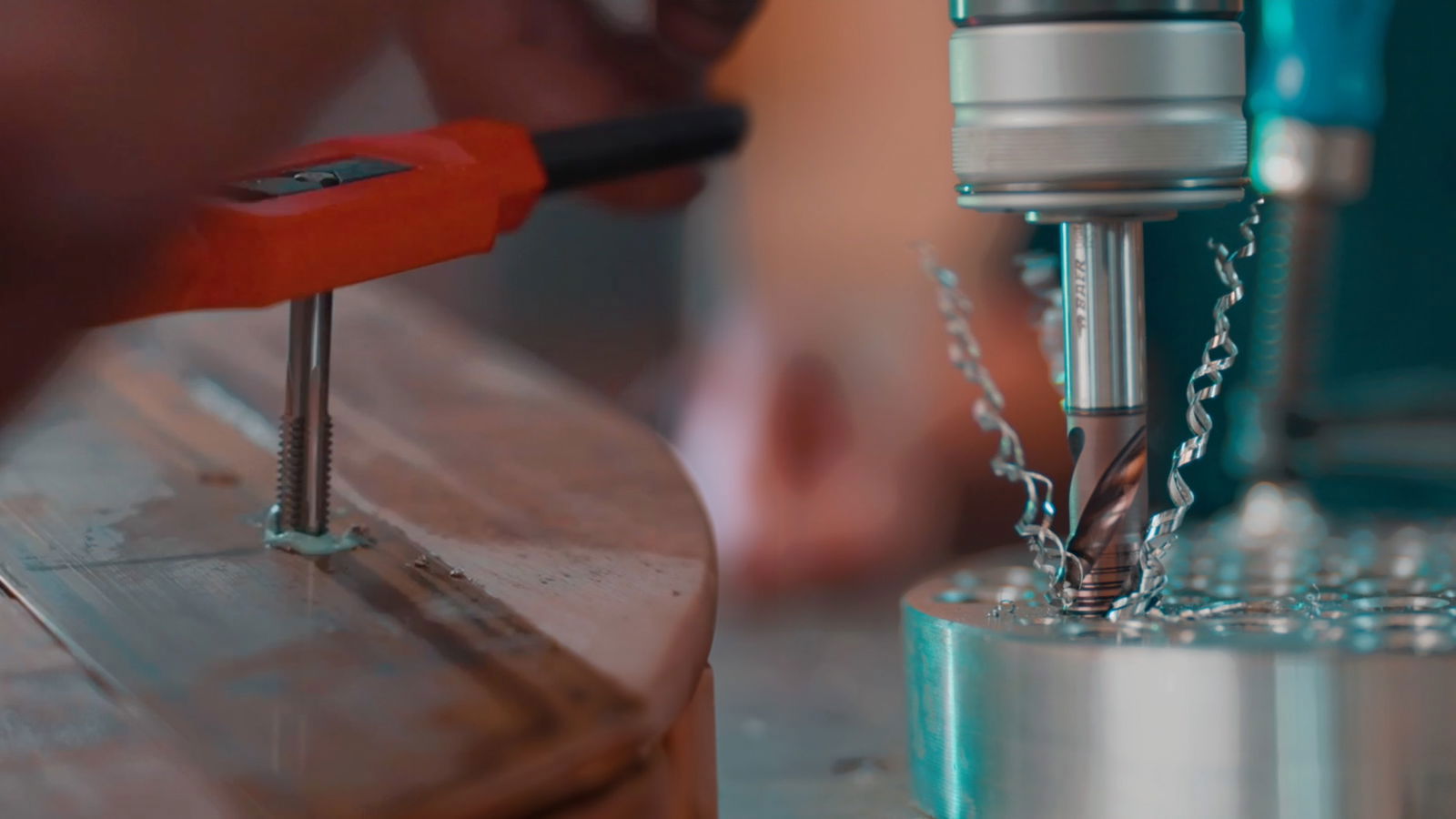Sure! Here’s the rewritten content:
---
If you’re new to threading and tapping, you’ve found the perfect guide. We’ll start from scratch, providing you with a thorough understanding of what a tap is, how it works, and the key differences between hand taps and machine taps.
### What is a Screw Tap?
A screw tap is a specialized tool designed to create threads by turning it into a pre-drilled hole. As it turns, the tool cuts material from the surrounding surface. A screw tap consists of a cylindrical shaft that ends in a square shape. The head contains the threading section, flutes, and the cutting edges.
Key features of the screw tap head include:
- **Thread Profile**: Determines the type of thread, including factors like diameter, pitch, and flank angle.
- **Lead Form**: Indicates at which thread turn the full profile is achieved.
- **Flutes**: These can be straight or helical and play a crucial role in chip evacuation.
Screw taps can be classified as either hand taps or machine taps. Understanding their differences and appropriate uses will help you choose the right tool for your needs.
### Hand Taps: A DIY Enthusiast’s Best Friend
Hand taps are perfect for those who want to thread without relying on machinery. This makes them cost-effective for hobbyists who don’t need to invest heavily in equipment. If you only need to create a few threads and lack a fully equipped workshop, hand taps are ideal. Their portability allows you to work in unconventional or hard-to-reach areas.
Hand taps usually come in sets of two or three tools, each with a specific purpose in the threading process:
- **Taper Tap**: Has a long lead with incomplete teeth and is marked with one ring. It removes the most material, creating about 65% of the thread profile.
- **Intermediate Tap**: Features a medium lead and more defined teeth, marked with two rings. It takes the thread profile to around 85%.
- **Finishing Tap**: Short lead with fully formed teeth and no markings. It completes the thread profile.
Using taps in this sequential order ensures a straight thread with manageable effort while extending the lifespan of the tools. Standard threads with a coarse pitch typically require all three taps, whereas fine threads may only need two.
For manual tapping, besides the taps, you’ll also need a holding tool, such as a tap wrench or a ratchet tool.
---

---
### Machine Taps: Efficiency in Industrial Settings
While hand taps are great for small-scale projects, they can be time-consuming for large-scale operations. In industrial settings, machinery is often used to speed up the process. Machine taps are specifically designed for this purpose and shouldn’t be used manually. Unlike hand taps, machine taps create the thread in a single operation, making them much faster.
However, machine taps require precise alignment and rigidity to avoid breakage. They come in various designs depending on the type of hole being threaded. Some machine taps are meant for through holes, while others are for blind holes. Additionally, the flute shapes and chip evacuation directions can vary based on the material being worked on.
### Forming Taps: Bridging the Gap
Forming taps combine elements of both hand and machine taps. Technically a machine tap, they can also be used manually thanks to their sturdy design. Their straight flutes reduce the risk of breakage, making them both practical and versatile. However, they require more effort than hand taps and are best suited for use with machinery.
### Comparing Hand Taps and Machine Taps: A Summary
Hand taps offer flexibility and precision, making them ideal for beginners. They are slower but allow for careful threading. For regular tasks, though, this manual approach can become tedious.
On the other hand, machine taps excel in fast, repetitive operations, making them indispensable in industrial environments. However, their effectiveness depends on having the proper machinery and expertise, making them more suitable for professionals.
Forming taps attempt to bridge the gap between the two but come with their own limitations. If you’re just starting out, a hand tap set is likely your best bet.
Now that you understand the differences between hand taps, machine taps, and forming taps, feel free to explore BAER’s online shop. You’ll find all these tools (and more) at competitive prices and exceptional quality!
---
I hope this provides the clarity you were looking for! Let me know if you’d like further adjustments.
Electrodeionization EDI Water Systems
Electrodeionization Edi Water Systems,Water Purification Machine,Ro Edi Water Treatment System,Edi Purified Water Machine
Foshan Hongjun Water Treatment Equipment Co. Ltd , https://www.hjwastewatertreatment.com